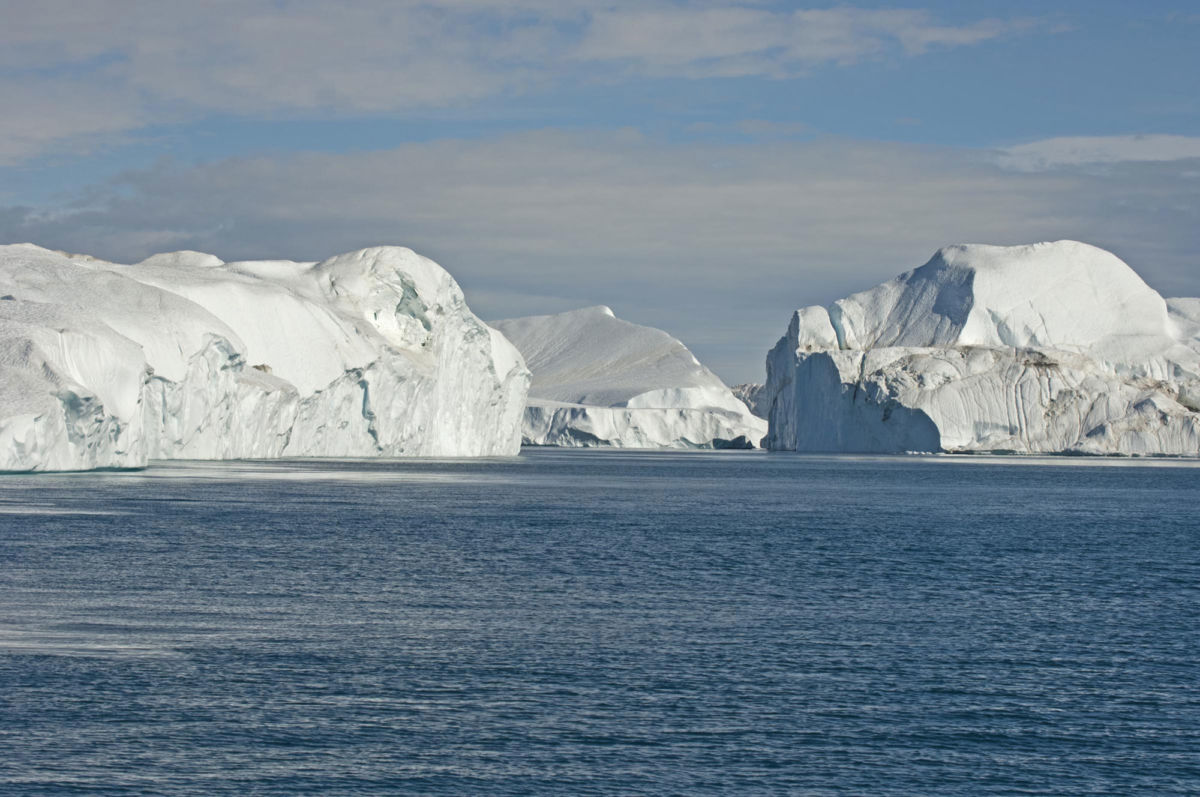Titanic II is set to sail in 2022. It’s a $500 million replica of the doomed Titanic that hit a North Atlantic iceberg in 1912. A local news report about the new ship postulated this logical but not valid prevailing attitude regarding climate change today: “The Titanic II will undoubtedly have less trouble with icebergs because of global warming.”
This statement could not be further from reality. If we as a culture could just remember that climate change is almost always not as it seems, it might be possible that we could survive as a species. On a warmer planet, cold extremes can become more common, drought can increase with more rainfall and icebergs can become more numerous.
The Cold Extremes
It’s not that a warming planet gets colder: Because more ice melts when it is warmer, the Arctic warms faster than the rest of the planet as ice reflects 90 percent of the sun’s energy back into space without it being trapped on Earth by the greenhouse effect. It’s called “Arctic amplification.”
This warming differential between the North and the rest of the planet changes the global pattern of jet stream circulation. The loops in the jet stream that drive weather systems around the world can become larger, extend further to the South and tend to move West to East more slowly.
The results are things like Hurricane Harvey’s stall that created a 25,000-year flood event across coastal Texas. Hurricane Sandy’s unprecedented left turn into New York and New Jersey was another, caused by a stalled-out, high-pressure system over Greenland. Likewise, the stall of Hurricane Florence can at least partially be attributed to climate change weakening hurricane steering currents. “Snowmageddon,” “Snowpocalypse” and “Snowzilla” are terms that have been used to describe monster snowstorms that have become more or less regular occurrences across the US Northeast and parts of Northwestern Europe since about 2009. These extreme winter storms really help show how Arctic amplification works.
Arctic Ocean summertime water temperatures are up to 14 degrees Fahrenheit warmer in some places. But even if the entire Arctic was 14 degrees warmer in winter, it’s still 30 degrees below. The wandering jet stream then picks up Arctic storms and pushes them farther South, bringing unseasonably cold weather more often. Refer to the term “polar vortex” in your memory bank.
Increased Drought With More Rainfall
An oxymoron, “simple physics” can quickly explain much of why the globe has experienced drought despite increased rainfall. Evaporation increases nonlinearly with warming. That is, a little more warming creates a lot more evaporation. Plants don’t really care how much it rains; they care how much moisture is in the soil.
The great beetle kill across the high-altitude and high-latitude forests of the world is being enhanced because of plant stress from “apparent drought,” which is being caused by greater evaporation. Less soil moisture due to more evaporation can actually create drought conditions that did not exist in our old climate with the same amount of precipitation.
Increased Icebergs on a Warmer Planet
So why is the Titanic II not any safer from icebergs on a warming planet? Increased melt in Greenland, where the Titanic-killing iceberg originated, has found its way to the bottom of the ice sheet through crevasses. This melt water does two things: It lubricates the ice sheet and allows it to flow toward the sea faster, and it can literally float the ice sheet up off Greenland’s bedrock by a few inches, further enhancing the flow of ice to the sea.
These things have caused iceberg discharge from Greenland to increase more than 500 percent from 2000 to 2011 (and undoubtedly more since). This increased iceberg discharge, along with the melt that caused it, is responsible for a lot of the increasing sea level rise we have been experiencing. The resulting fresh water has also pooled on the surface of the North Atlantic and caused a 40 percent decrease in flow of the Gulf Stream.

Importantly for the Titanic II (and the rest of us), iceberg migration into the North Atlantic has increased since 1900. Their numbers have doubled from the long-term average of about 450 a year to about 1,000 today.
The Meaning of This
Processing global warming psychologically is the key to saving our species. In order to develop behaviors that can make a difference, first we have to understand how critically these new behaviors are needed. Climate change is fraught with challenges that obscure the need for changed behavior, and the three counterintuitive results of rising global temperatures listed above are only the beginning.
Possibly the biggest challenges can be found in the way we talk about the weather. The prior quote about the Titanic II is part of this challenge. If our media spokespersons can’t get it right, this means that the knowledge they transfer to us is faulty. With climate change and with the Titanic II, this means trouble.
The discussion goes way beyond icebergs, though. Media outlets are where nearly all of us get much of our climate-related knowledge. Within the media, weather persons and meteorologists represent those that transfer the largest amount of such knowledge. Our weather institutions share much of the challenge that is represented by media’s knowledge transfer, too. What happens when the National Weather Service updates its precipitation and temperature averages every 10 years? The averages change, of course.
It’s standard practice in meteorology to be as accurate as possible. This requires updating average temperatures so that we know important things like when the first or last frost occurs, or the energy needs for heating or cooling, or when the water will be warm enough to go to the lake. So, every 10 years, the old temperature and precipitation numbers change. The effects on our society are easiest to see with warming temperatures.
Today’s average temperature for a certain day is warmer than it was 10 years ago, and that temperature 10 years ago was warmer than it was 10 years before that. When our weathercasters tell us that the temperature was average for this day, they mean it’s average for the day relative to the new averages the National Weather Service updates every 10 years. So, even though Earth’s average temperature has been warmer than the 20th century average for more than 400 months in a row, every month since 1984, we have still heard that the temperature on any given day was just about perfectly average.
Because the temperature varies so widely from day to day, this may not be an invalid statement, but the concept remains that what is meant by “average” or “normal,” relative to our old climate, rarely enters into the discussion.
So, to increase awareness to a level that is warranted by what so many and so highly knowledgeable scientists say is the single most important issue our society has ever faced, we must pay more attention to how we talk about the weather. This means we all need to help our weather professionals with their discussion behaviors too.
Join us in defending the truth before it’s too late
The future of independent journalism is uncertain, and the consequences of losing it are too grave to ignore. We have hours left to raise the $12,0000 still needed to ensure Truthout remains safe, strong, and free. Every dollar raised goes directly toward the costs of producing news you can trust.
Please give what you can — because by supporting us with a tax-deductible donation, you’re not just preserving a source of news, you’re helping to safeguard what’s left of our democracy.
